Culture

Overview
Culture
The first sentence of prominent Iranologist Richard Nelson Frye's last book on Iran reads: "Iran's glory has always been its culture”. Persian culture is one of the richest in the world and is rivaled by only a few other cultures on Earth in richness and variety. Many ceremonies of the ancient Persians are the basis of the familiar western celebrations. These were mostly adopted by the Greeks and Romans and have worked their way into today's western societies. The Persians today, more or less celebrate most of the same ancient cultural festivities. In this segment we introduce these Persian traditions and festivities and look at their history.
The Festival of "Yalda" (Winter Solstice Celebrations)
The winter solstice, December 21st or 22nd, is the longest night of the year. Near the winter solstice, the length of the day changes very slowly, as does the Sun's height in the sky - one of the reasons why the long winter nights seem to go on forever!
In Iran, the winter solstice has been celebrated for centuries and it is called Shab-e yalda, which refers to the birthday or rebirth of the sun. The ceremony is traced to the primal concept of Light and Good against Darkness and Evil in the ancient Iranian religion. This night with Evil at its zenith is considered unlucky. The last day of the Persian month of 'Azar' is the longest night of the year. From this day forward, Light triumphs as the days grow longer and give more light. This celebration comes in the Persian month of 'Day', which was also the name of the pre-Zoroastrian creator god (deity). Later he became known as the God of creation and Light, from which we have the English word day (the period of light in 24 hours).
In the evening of Shab-e Yalda bonfires are lit outside, while inside the home, family and friends gather in a night-long vigil. In the past, fruit and vegetables were only available in season and the host, usually the oldest in the family, would have carefully saved grapes, honeydew melons, watermelons, pears, oranges, tangerines, apples, and cucumbers. These were then enjoyed by everyone gathered in the house.
Chahar Shanbeh Soori
One of the symbolic rituals of the New Year celebrations occurs on the eve of the last Wednesday of the year (Chahar Shanbeh Soori, literally meaning "the eve of Red Wednesday"). On this magical night, families gather piles of brush or wood and bonfires are lit in public places. They then leap over the flames shouting:
"Give me your vibrant red hue, and take back my sickly yellow pallor!"
The essence of this tradition is giving thanks for the previous year's health and happiness, while exchanging any remaining paleness and evil with the warmth and vibrancy of the fire. According to tradition, the living are visited by the spirit of their ancestors on the last days of the year, and many children wrap themselves in shrouds, symbolically re-enacting the visits. They also run through the streets banging on pots and pans with spoons and knocking on doors to ask for treats. The ritual is called qashogh-zany (spoon beating) and symbolizes the beating out of the last unlucky Wednesday of the year. This could be seen as the Iranian version of the Western Halloween night.
The Festival of Noe-Rooz (Nowruz)
Nowruz celebrates the coming of spring by nations of Aryan heritage or Iranians. Nowruz occurs at the exact time of the Vernal (spring) Equinox, when the length of night and day are equal. A true Earth year is 365 days, 5 hours, 48 minutes and 64 seconds, which is the time taken for the Earth to complete one orbit around the sun.
The origins of Noe-Rooz (Nowruz) are unknown, but they go back several thousand years predating the Achaemenian Dynasty. The ancient Iranians celebrated two seasons. One was "Zayana" or winter, (the festival of Mehr'gaun) and the other "Hama", summer, celebrated by the festival of Noe-Rooz to announce its coming.
Today, the tradition is continued through the setting of the table or spread with an arrangement of several items of which seven of them start with the Persian letter Seen (in English S). The Persian translation for the number seven is "Haft", hence, "Haft Seen" means "Seven S's". It is customary for the family to gather round the Haft Seen spread a few hours before the New Year and recite poems from Hafez and verses from the Holy Quran. At the exact moment of the New Year, the oldest person in the family continues the traditions by hugging and wishing each member well and offering sweets, pastries, and coins. Banknotes are sometimes placed between the pages of the Holy Koran to bless them before they are given to the younger members of the family.
The contemporary Haft Seen spread includes seven of the following items:
Sabzeh - wheat or lentils grown in a tray or dish prior to Noe-Rooz to represent rebirth,
Samanu - a sweet pudding made from wheat germ, symbolizing affluence,
Senjed - the dried fruit of the lotus tree which represents love,
Seer - which means garlic in Persian, and represents medicine,
Seeb - which means apple in Persian, and represents beauty and health,
Somaq - sumac berries, which represent the colour of the sun rise,
Serkeh - which means vinegar in Persian, and represents age and patience,
Sonbol - the hyacinth flower with its strong fragrance heralding the coming of spring, and
Sekkeh - coins representing prosperity and wealth.
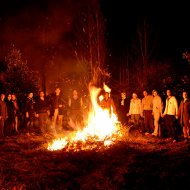
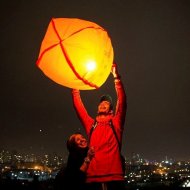
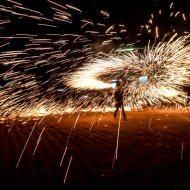


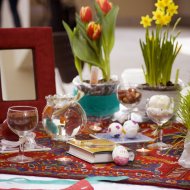
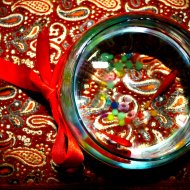
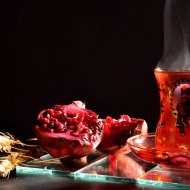
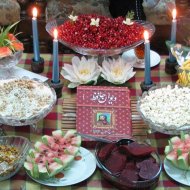
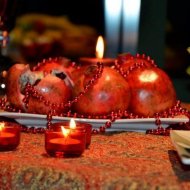
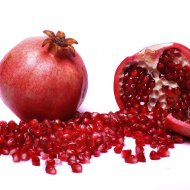
 twitter
twitter
 Google
Google LinkedIn
LinkedIn instagram
instagram